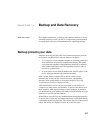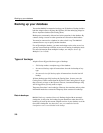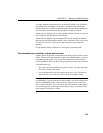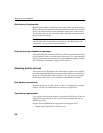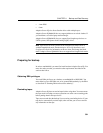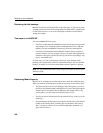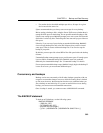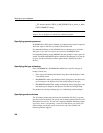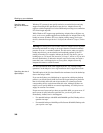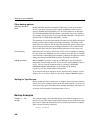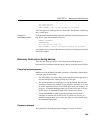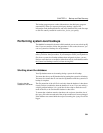
Backing up your database
384
...TO ’
archive_device
’ [ SIZE
#_of_KB
][STACKER
#_of_drives_in_stack
] ...
[ WITH COMMENT ’
string
’ ]
Note If you need to back up an Adaptive Server Anywhere database, see the
Adaptive Server IQ Reference Manual for additional options.
Specifying operator presence
ATTENDED ON or OFF controls whether or not human intervention is expected
when new tapes or disk files are needed. The default is
ON.
For unattended backups to disk,
BACKUP does not prompt you to add more
disk space. If you run out of space, an error occurs and
BACKUP halts.
For unattended backups to tape,
BACKUP does not prompt for a new tape to be
loaded. The
SIZE and STACKER options determine what happens if you run out
of space. See the information on these options under “Specifying archive
devices”.
Specifying the type of backup
FULL | INCREMENTAL | INCREMENTAL SINCE FULL specifies the type of
backup. Choose one:
•
FULL causes a full backup of both the Catalog Store and the IQ Store. FULL
is the default action.
•
INCREMENTAL makes a full backup of the Catalog Store, and then backs
up all changes to the IQ Store since the last IQ backup of any type.
•
INCREMENTAL SINCE FULL makes a full backup of the Catalog Store, and
then backs up all changes to the IQ store since the last full IQ backup.
For guidance in selecting a backup type, see “Scheduling routine backups”.
Specifying archive devices
The TO
archive_device
clause indicates the destination disk file(s) or system
tape drive(s) for the backup. You specify one
TO
archive_device
clause for each
destination file or device. At least one is required.
BACKUP distributes output
in parallel—that is, concurrently—across all of the devices you specify. For
faster backups you should specify more devices, up to the number your
hardware platform supports.




